Six Ways From Semalt To Analyze Your SEO

TABLE OF CONTENT
- Keyword Rankings
- Know Your Best Pages
- Know Your Competition
- Know How Unique Your Website Pages Are
- Check For Page Speed
- Monitor Your Backlinks
- Conclusion
The primary reason why you are in business is to make profits. But smart business people know that they continuously need to evaluate their investments to find out what works, what isn't working, and why. In this post, we'll be looking at six ways you can analyze your SEO performance so you can be sure you're getting the best out of your website.
1. KEYWORD RANKINGS
Your top reason for doing SEO is to rank as highly as possible for search enquiries pertaining to your industry on Google, which will lead to an increase in organic traffic and ultimately, conversions. You need to input certain keywords on your site that your potential visitors search for in order to rank for those keywords on Google TOP. From time to time, you should be checking what position you rank for so that you can be sure that your SEO campaign is actually working.
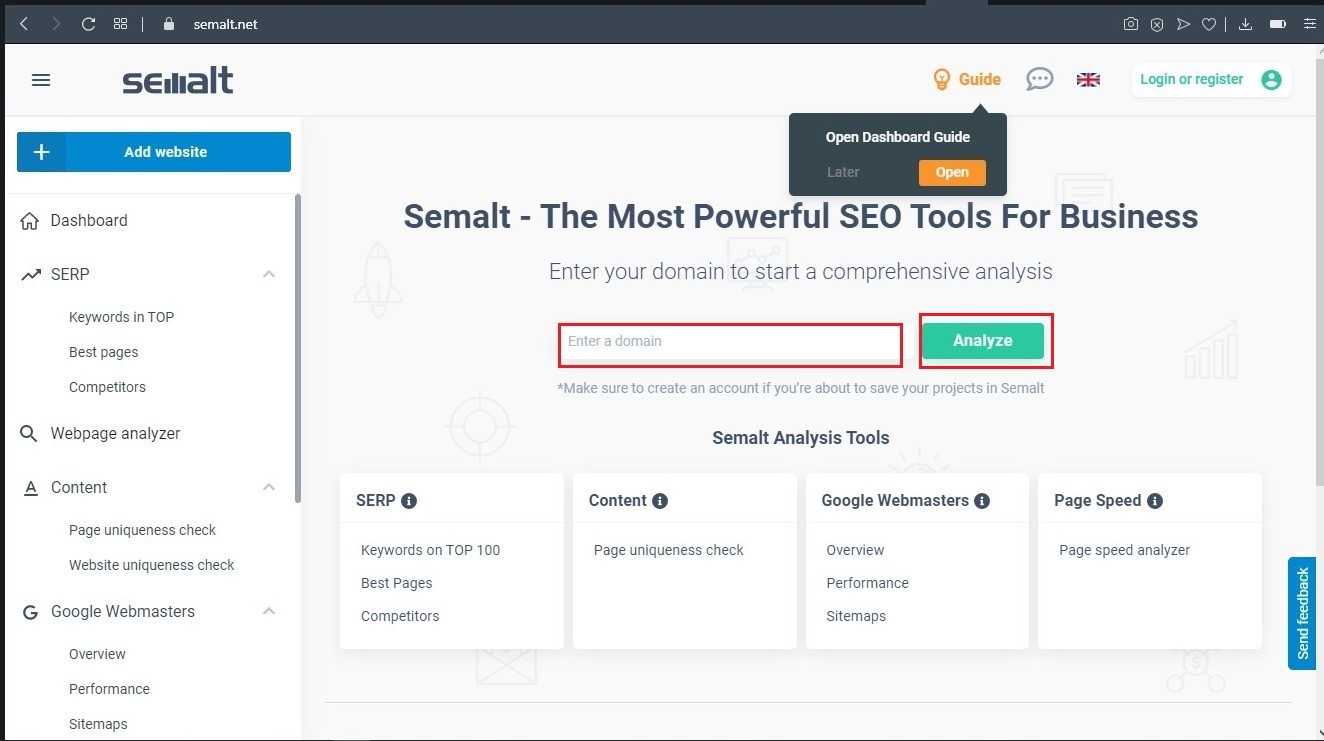
With Semalt's free web analytics tool, you can monitor your website's position on Google TOP. Simply enter your domain name in the space provided and click on the "Analyze" button. You'll be taken to a new page called "Keywords in TOP" that gives you a report of the keywords that your website ranks for in organic search results on Google, the ranked pages on your site and their search engine result pages positions for a specific keyword.
You can decide to either analyze both your core domain and subdomains or you can leave out the subdomains to get information about your core domain only.
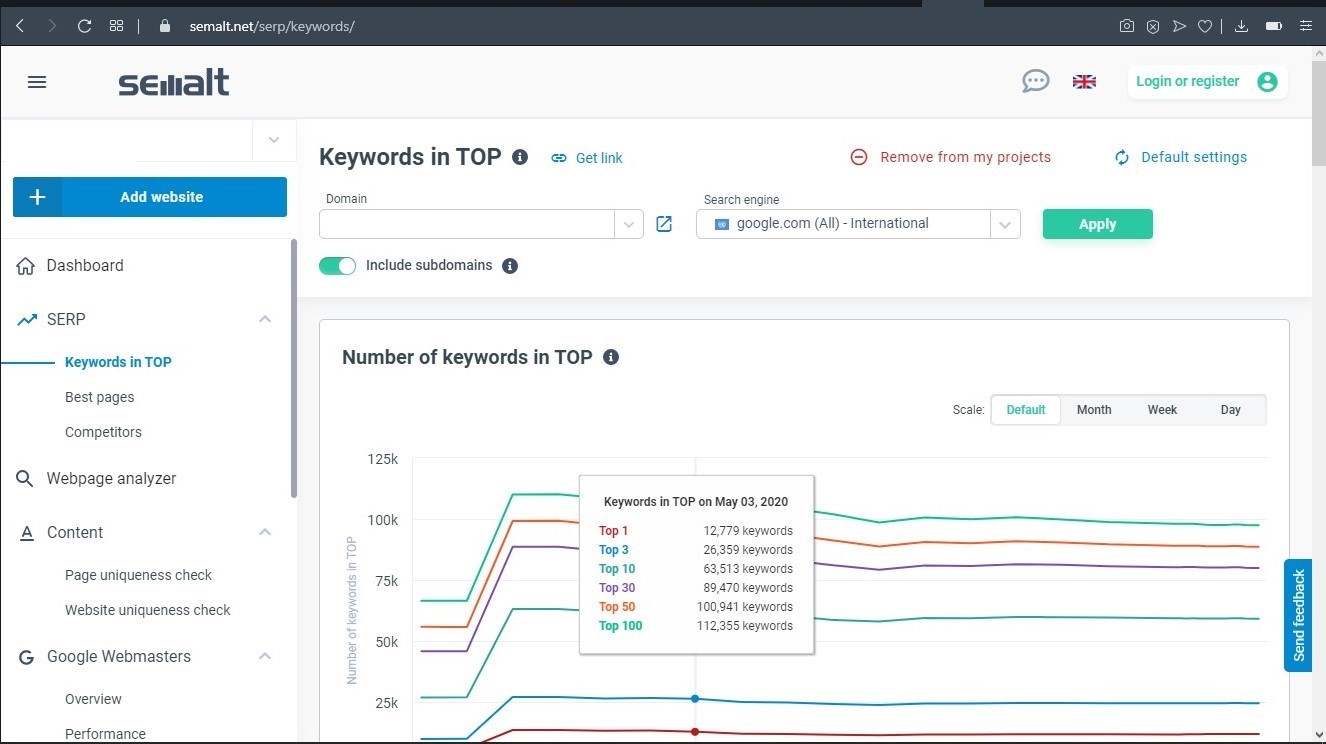
On this same page, you can choose from out of the numerous Google search engines that your website already ranks in for at least one keyword. For example, if your business serves Canadians in particular, asides checking your ranking on the major Google search website (https://google.com), you can check your ranking on the Canadian specific Google search site (https://google.ca).
The list of Google search engines is arranged in descending order of the amount of keywords. You'll find a chart (called number of keywords in TOP) that displays the number of keywords in the ranking pages of Google over time.
The chart shows you the changes in the number of keywords your site ranks for in the top 100 organic search results pages of Google. You can view it per month, week or day.
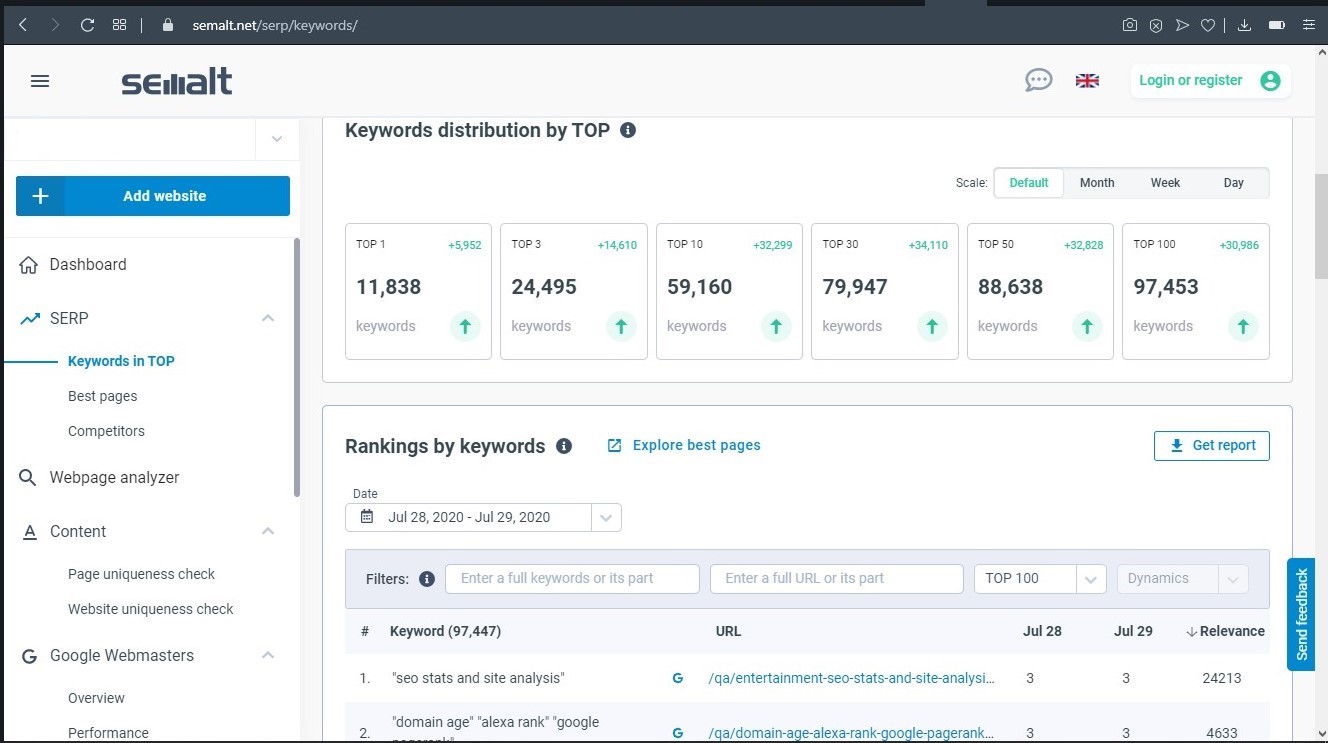
If you scroll down, you can see the keywords distribution by TOP. Here you'll see the number of keywords your site ranks for in the organic search results of Google TOP 1-100, set against a previous date. You can also view it in a monthly, weekly or daily format.
You'll also find a table called "rankings by keywords" which displays the most popular keywords the pages of your site rank for in search results.
You have the option to select the time frame you want to monitor and you can view the SERP positions of your site for the dates you have selected and the changes that have occurred between those two dates. You can filter the information in the table using different criteria such as a keyword (or part of it), a URL (or part of it), TOP 1-100, and changes in position.
Semalt offers you the option to download the comprehensive report so you can gain insights from all you have discovered concerning the keywords your site is ranking for.
2. KNOW YOUR BEST PAGES
You should know which pages are bringing in traffic and which pages are not.
At the left-hand side of the page is the list of analysis tools on this site. Simply click on best pages and you'll be shown the pages that bring in the highest number of visitors to your site.
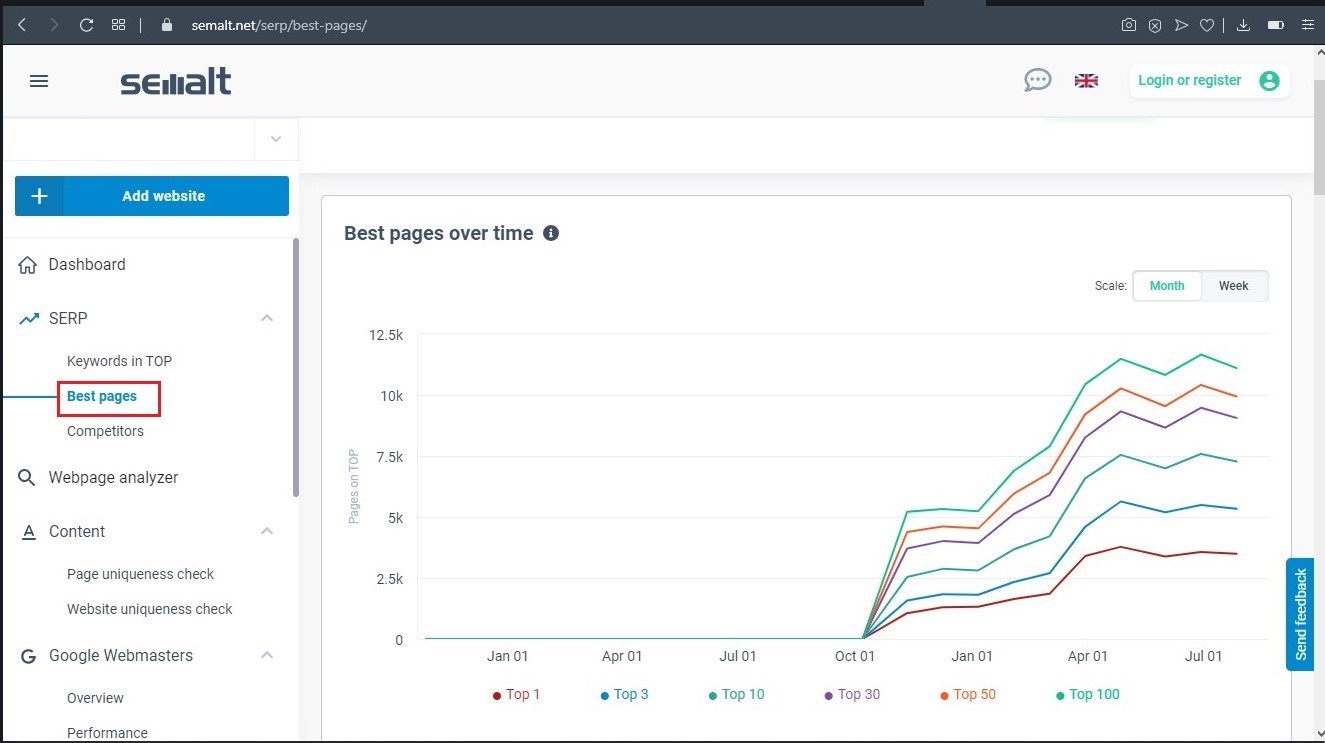
These are the pages on your website that you should put more focus on. To get the best out of them, fix any SEO errors on them, make the content even more unique and promote them.
You'll find a chart that displays the changes in the number of site pages in Google TOP since the website project started. You can switch the scale to have a weekly or monthly data view.
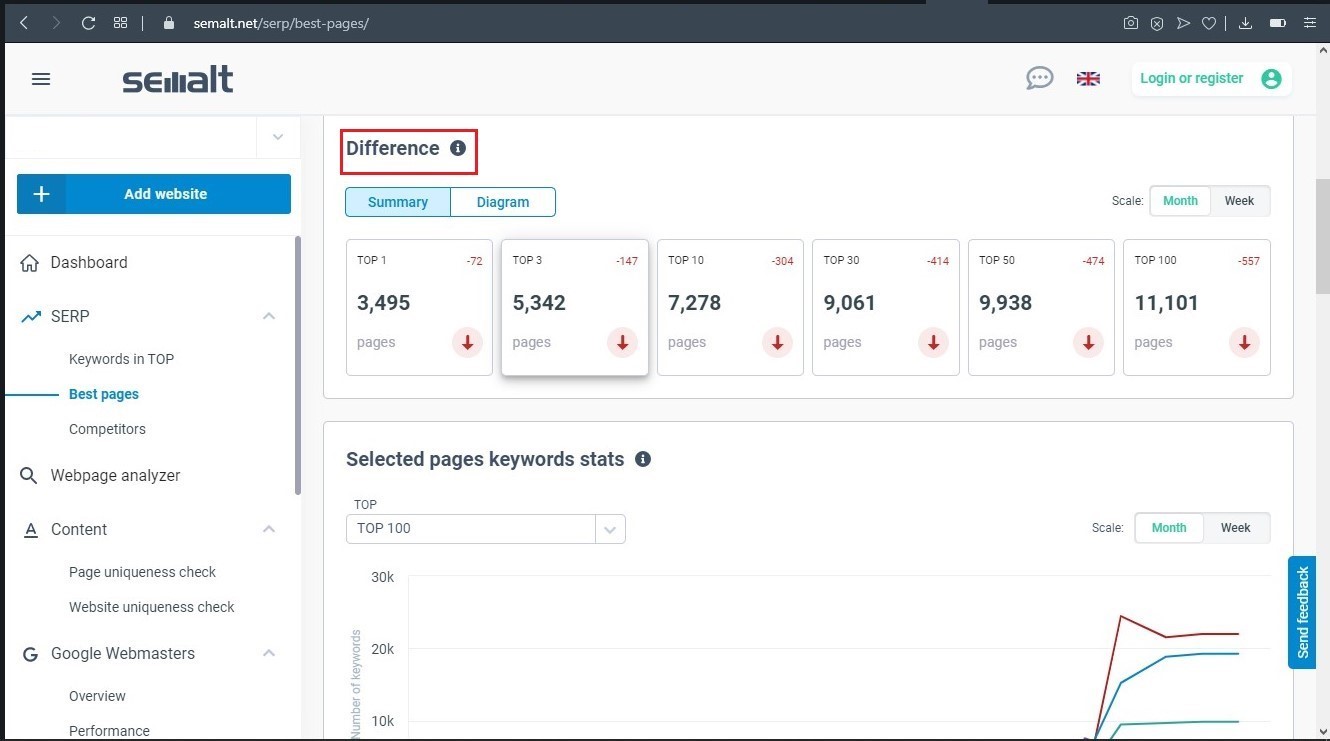
Next, you will find a "Difference" tab that displays the number of site pages that are in the top 100 Google organic search results, set against a previous date. You can also switch the scale for a monthly or weekly data view.
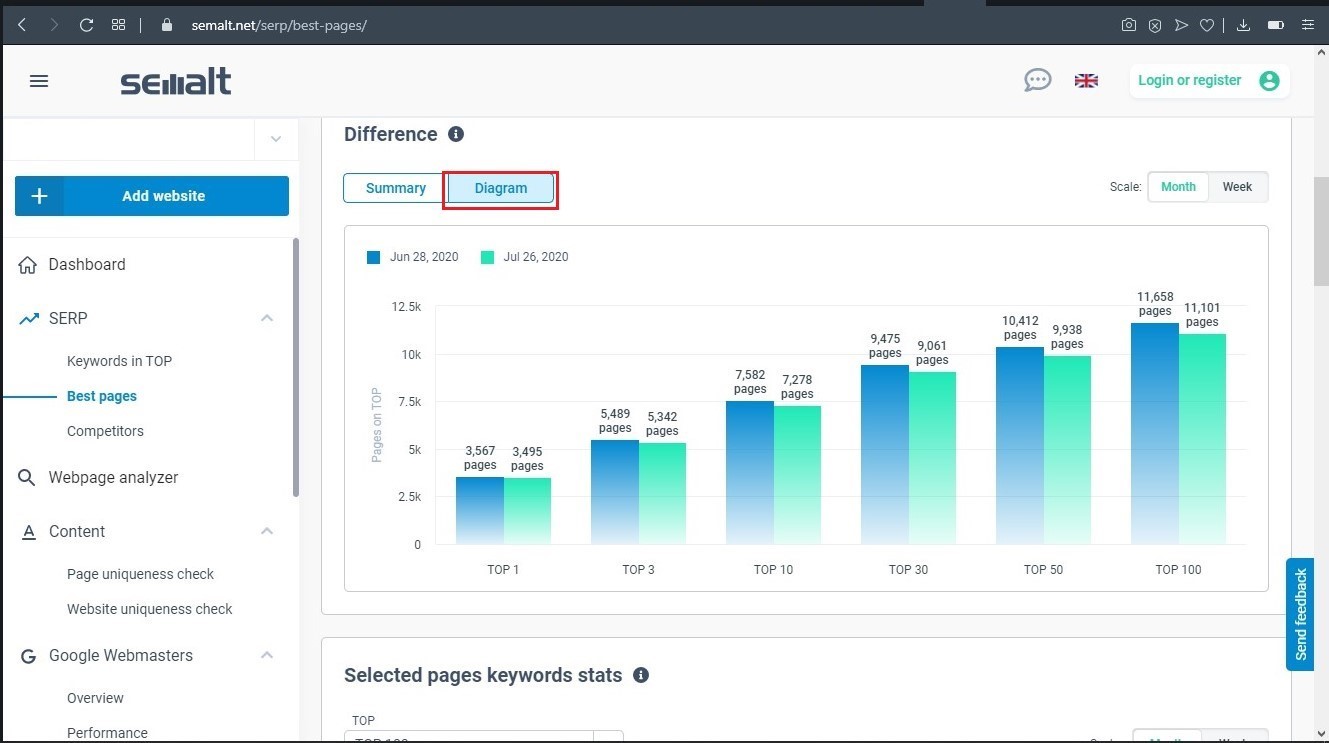
Semalt also gives you a diagrammatic summary of this data asides the standard numerical summary.
After this, you'll find a chart called "selected pages keywords stats" that tells you what changes have occurred in the number of keywords the selected webpages have been ranking for on the top 100 search result pages of Google, since your website project was created. A monthly or weekly view is also available here.
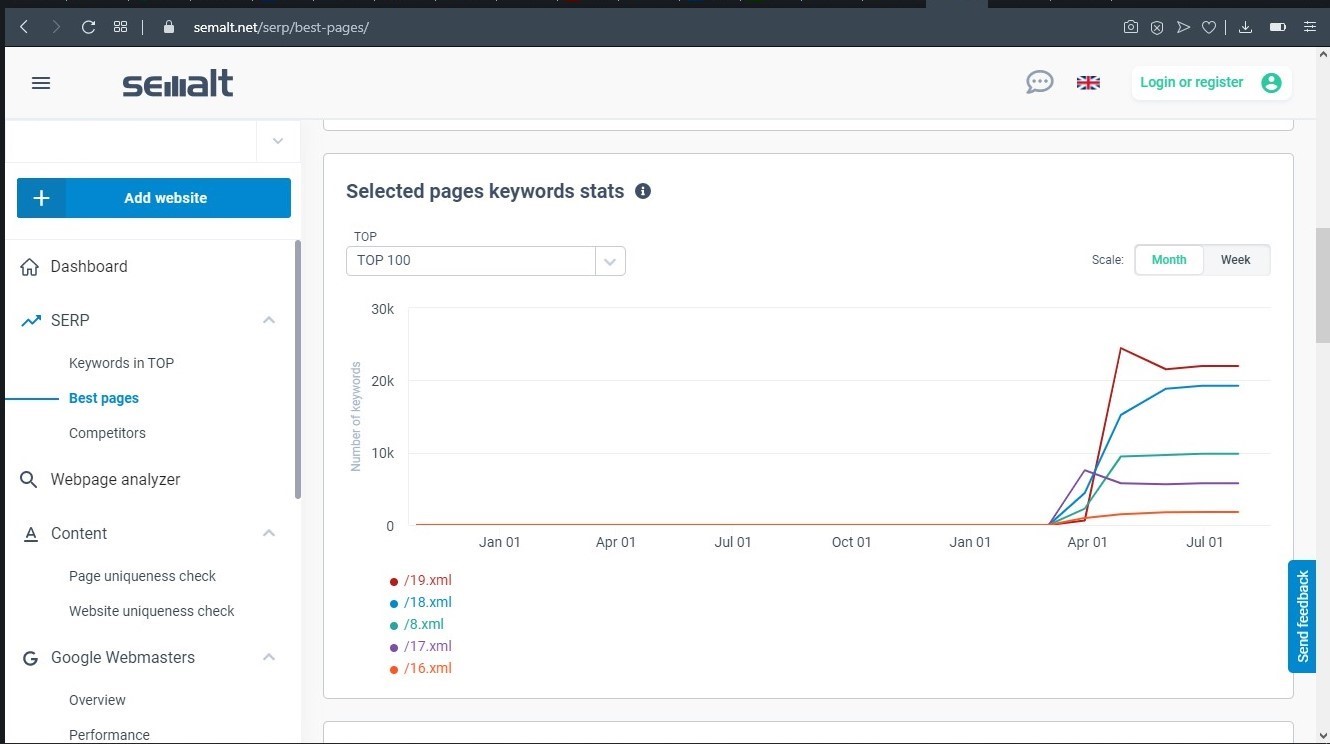
Next, you find the "Pages in TOP" table where you can set a date range and discover the number of keywords a specific page on your site is ranked for in the top search results pages of Google for the selected time frame.
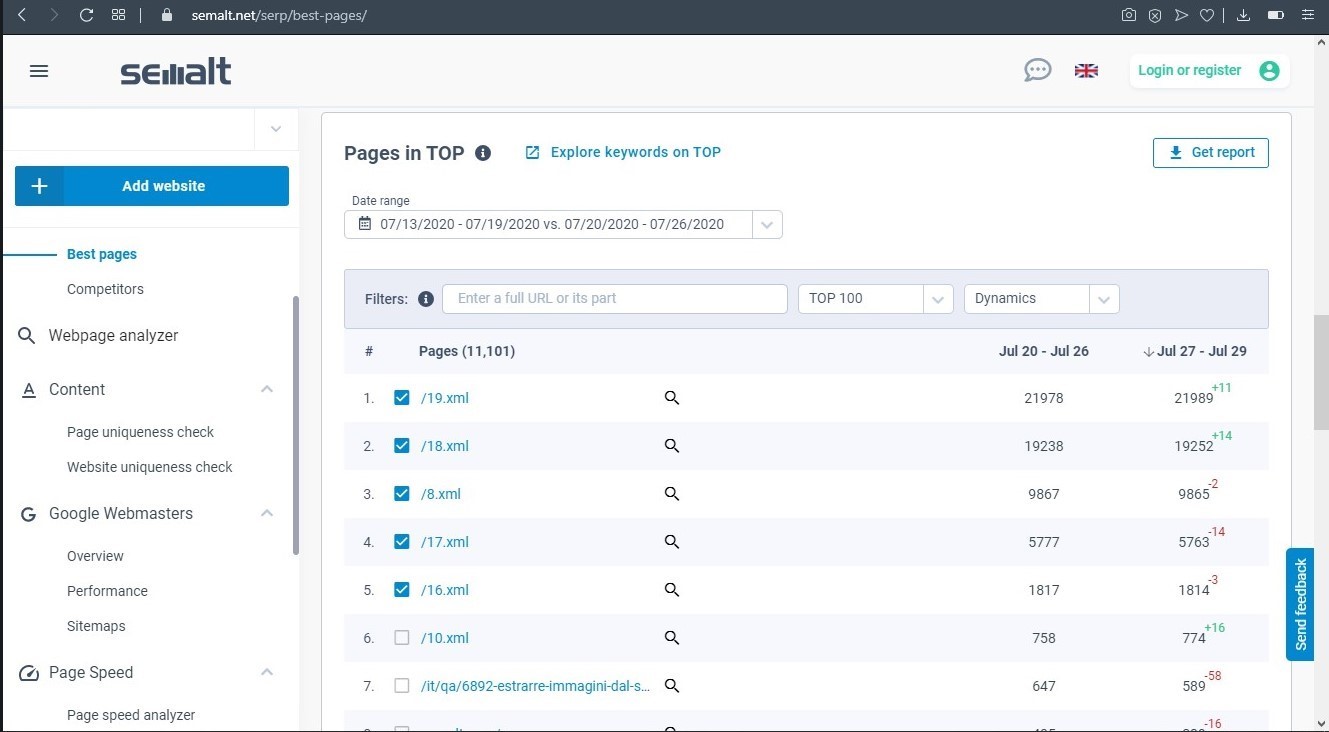
3. KNOW YOUR COMPETITION
To get the best out of your website, you should keep tabs on other sites that are competing with you for the same keywords your site ranks for. When you click on the "Competitors" tab on the menu on the left, you will be taken to a page that shows you the position your site holds among your competitors by the total number of keywords in Google TOP 1-100.
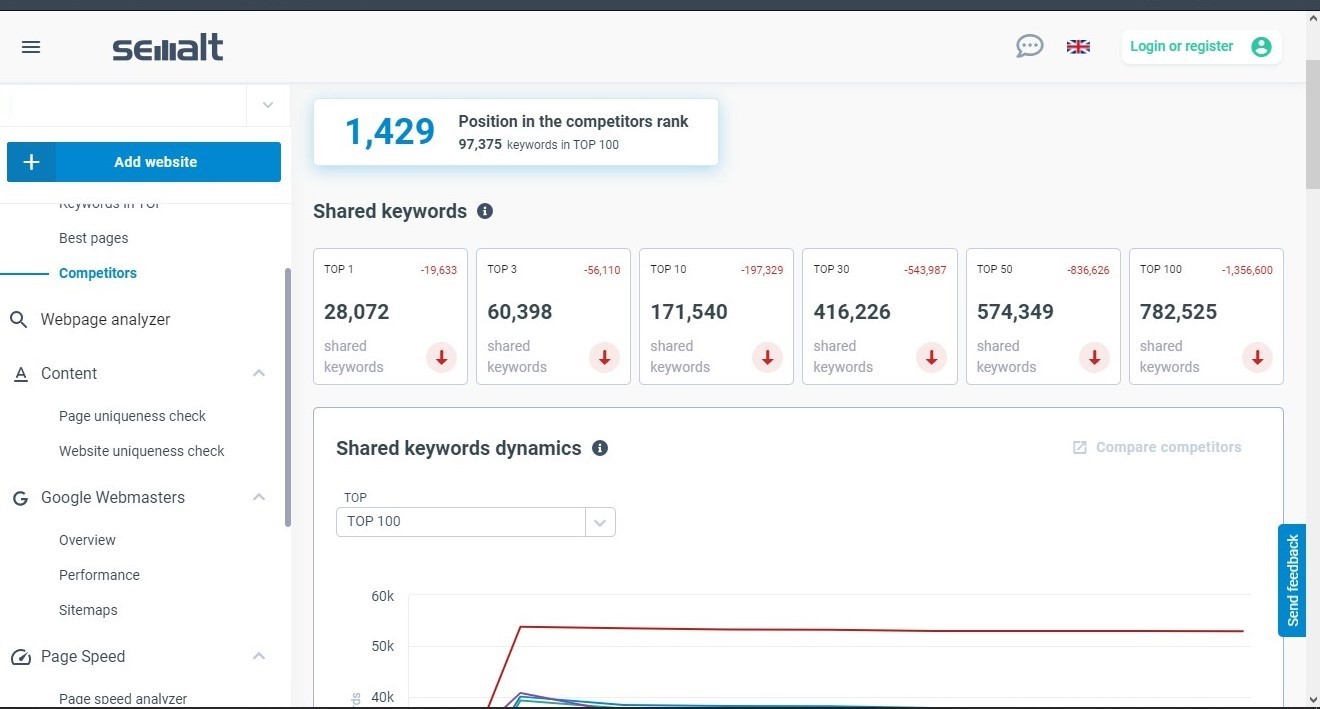
After seeing your current position, there's a "shared keywords" block that you'll find which displays the number of shared keywords that your site and your top 500 rivals rank for in the search results pages of Google. The analysis will be based on a selected date.
For even more insight, Semalt provides the "shared keywords Dynamics" chart that displays the changes in the number of shared keywords the competitors you have selected, and have ranked on the top SERPs of Google.
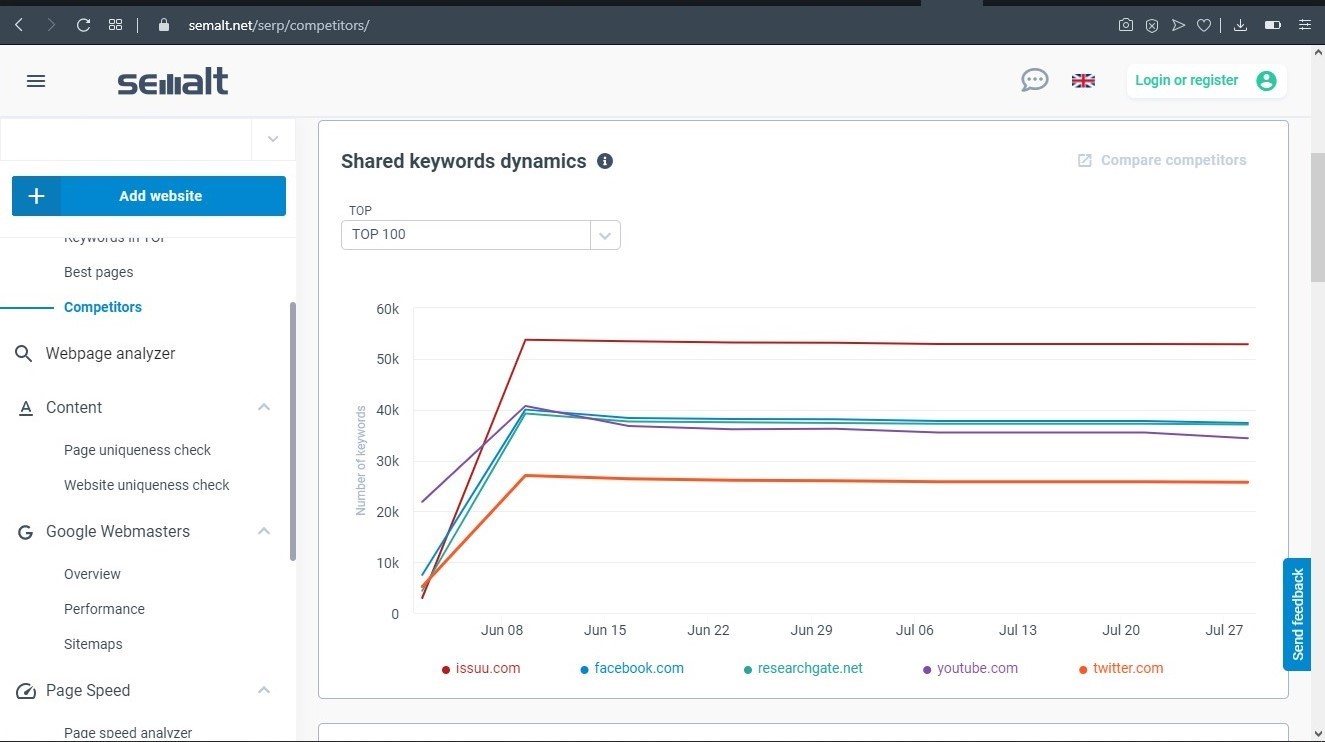
Next, you'll find the "Competitors in Google TOP" table where you can see the number of shared keywords you and your rivals rank for, and also the differences in the number of shared keywords (set against a previous date).
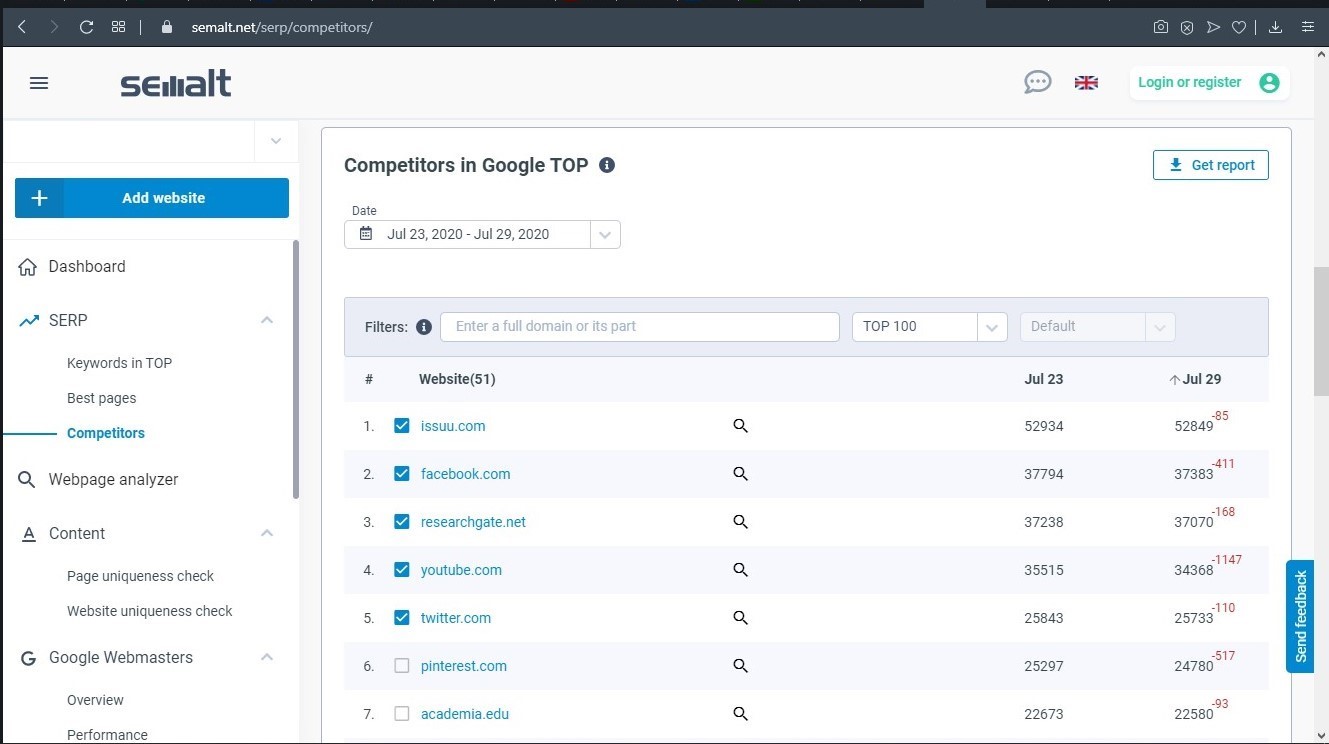
4. KNOW HOW UNIQUE YOUR WEBSITE PAGES ARE
To Google, content is king. You must ensure that the content on your website is not plagiarized. If Google considers your site content is copied, it may lead to penalties.

Use Semalt's page uniqueness check tool to know if Google views your content as unique or not. Click on the page uniqueness check tab on the left which will take you to a page where you can check your rating. A 0-50% score indicates high plagiarism; a 51-80% score shows that Google considers your content a rewrite at best; while an 81-100% score signifies that the search engine deems your content as unique.
For more in-depth analysis, you can find a content list that shows you all the text seen by Googlebot on the specific page with duplicate parts highlighted. The page uniqueness tool also shows you a list of the websites that Google considers as the primary sources of the content in the given page and also the specific part of the content that is on those sites.
5. CHECK FOR YOUR PAGE SPEED
Google strives to provide its users with the best user experience possible, so if it knows that your site doesn't load fast enough, it will rank you lowly. Use the page speed analyzer tool to find out if the loading speed of your page meets current Google requirements.
Semalt provides you with a desktop and mobile rating of your page. You will also be shown the errors that you should fix and suggestions to help you optimize the load time of your webpage.
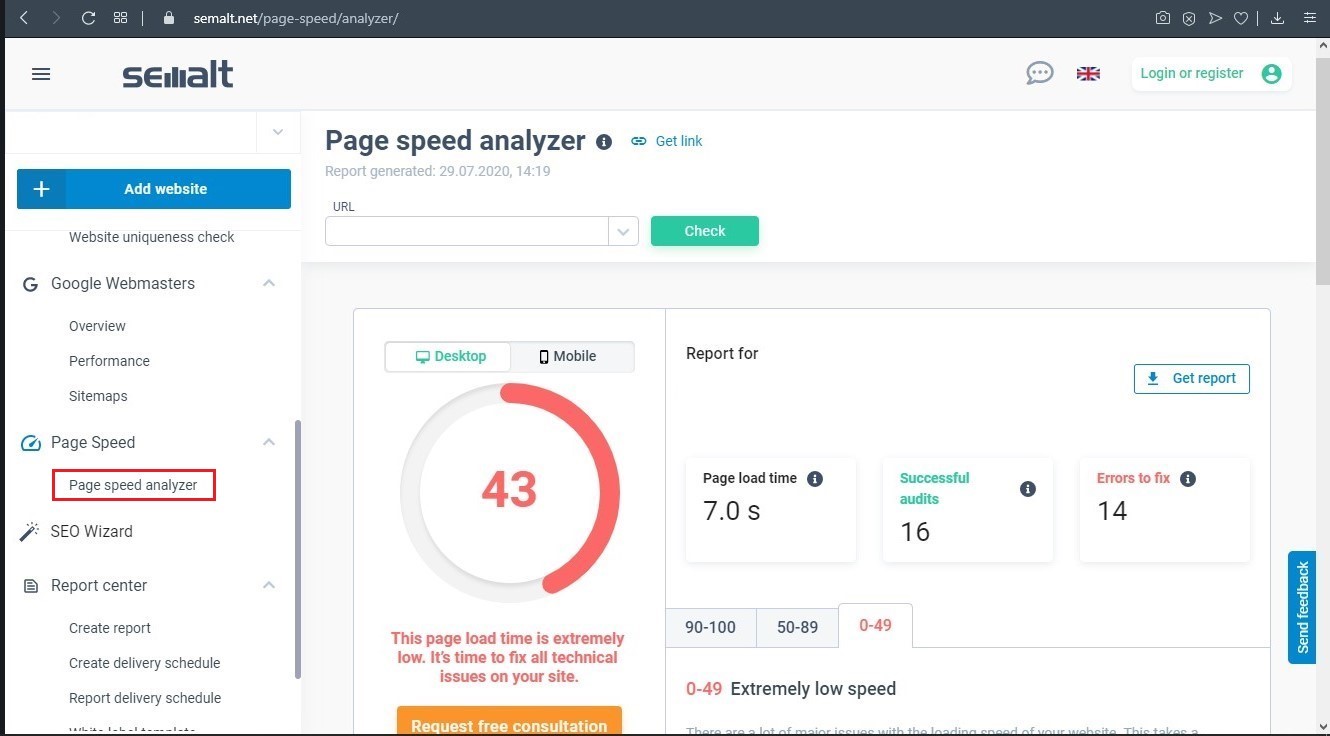
6. MONITOR YOUR BACKLINKS
While there are over 200 factors the Google algorithm uses to rank websites, backlinks are one of the most important. You should put a lot of focus into your link building strategy in order to rank higher on Google TOP.
Ensure that your links are coming from high authority websites and that you link to them as well. Be on the lookout for broken links or spammy links and get rid of them as these hurt your SEO strategies.
Some competitors may want to use black hat strategies to hurt your website's ranking by directing spammy links towards your site. When you sign up for an SEO campaign with Semalt, our team will always be on the lookout for you to ensure no bad links are directed towards your website.

CONCLUSION
Although there are many other ways to analyze your SEO performance, these are some of the most important aspects you should consider monitoring that can significantly impact your search rankings on Google TOP. Take advantage of the amazing tools provided by Semalt to help you analyze information concerning the keywords your site is ranking for, your best pages, your competitors, the uniqueness of your content, your page speed and backlinks.